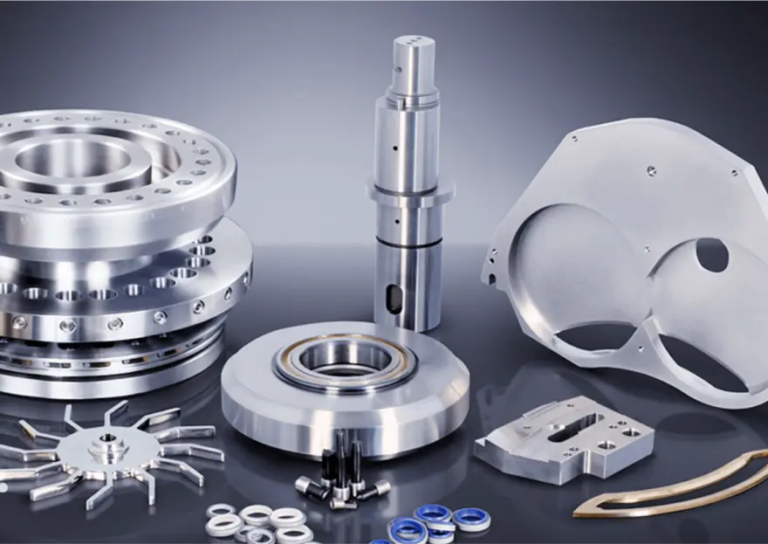Integrating CNC Equipment on the Production Line: The Power of Network Segmentation
As manufacturing evolves, the need for efficient and streamlined production processes has become more crucial than ever. With the increasing use of computer numerical control (CNC) equipment on the production line, networking these devices has become a vital step in ensuring seamless communication, data exchange, and overall production efficiency. In this blog post, we’ll explore the benefits of connecting CNC equipment on the production line to the local network and the importance of network segmentation to ensure a secure and reliable manufacturing environment.
The Importance of Connectivity
Connecting CNC equipment on the production line to the local network offers numerous benefits, including:
- Improved Data Exchange: Automated data exchange between devices enables real-time monitoring and control, reducing errors, and improving overall production quality.
- Enhanced Communication: Networked devices can communicate with each other, enabling seamless collaboration and coordination between machines, reducing production downtime, and increasing overall efficiency.
- Access to Remote Monitoring and Diagnostics: Remote access to networked equipment allows for real-time monitoring and diagnosis, reducing maintenance costs and improving equipment performance.
- Increased Efficiency: Automation and integration of processes enable faster turnaround times, reduced labor costs, and improved production capacity.
The Risks of Conventional Network Connectivity
While connecting CNC equipment to a network brings numerous benefits, it also introduces potential risks, such as:
- Data Breaches: Network-connected devices can become vulnerable to cyber threats, compromising sensitive data and intellectual property.
- Inadequate Security: Without proper security measures, unauthorized access to networked devices can lead to tampering, sabotage, or theft.
- Network Congestion: The increased traffic generated by networked devices can lead to congestion, slowing down production and reducing overall efficiency.
The Power of Network Segmentation
To mitigate these risks, network segmentation is crucial. Segmentation involves dividing a network into smaller, isolated segments, each with its own set of security policies and controls. This approach ensures that:
- Network Vulnerabilities Are Isolated: In the event of a security breach, the impact is limited to a specific segment, preventing widespread damage.
- Segmented Networks Remain Isolated: Communication between segments is restricted, preventing unauthorized access and data exchange.
- Security Measures Are Tailored to Each Segment: Each segment can have its own set of security controls, tailored to the specific needs of the connected devices and systems.
Implementing Network Segmentation in CNC Equipment Networks
To effectively integrate CNC equipment on the production line, consider the following best practices for implementing network segmentation:
- Deploy Software-Defined Networking (SDN) Solutions: SDN solutions offer greater control over network traffic and can be used to implement segmentation and isolation policies.
- Use Network Virtualization and Micro-Segmentation: These technologies enable granular control over network traffic and can be used to segment devices and applications.
- Implement Strict Access Control: Limit access to networked devices and systems to authorized personnel only, using secure authentication methods such as VLANs, VPNs, and multifactor authentication.
- Regularly Monitor and Audit Network Traffic: Regular monitoring and auditing of network traffic can help identify potential security threats and prevent unauthorized activities.
Conclusion
Connecting CNC equipment on the production line to the local network is a necessary step in modern manufacturing, but it requires careful consideration of the potential risks and threats associated with network security. By implementing network segmentation, manufacturers can ensure a secure and reliable manufacturing environment, protecting sensitive data, and maintaining the integrity of the production process. By following best practices for implementing network segmentation, manufacturers can reap the benefits of connectivity while minimizing the risks, ensuring a highly efficient and competitive production line.
Layout:
[Header]
Integrating CNC Equipment on the Production Line: The Power of Network Segmentation
[Intro]
Connecting CNC equipment on the production line is a vital step in ensuring seamless communication, data exchange, and overall production efficiency. However, this increased connectivity introduces potential risks and threats, making network segmentation a crucial consideration.
[Section 1: The Importance of Connectivty]
Improved Data Exchange, Enhanced Communication, Access to Remote Monitoring and Diagnostics, and Increased Efficiency
[Section 2: The Risks of Conventional Network Connectivity]
Data Breaches, Inadequate Security, and Network Congestion
[Section 3: The Power of Network Segmentation]
Isolated Network Vulnerabilities, Segmented Networks, and Tailored Security Measures
[Section 4: Implementing Network Segmentation in CNC Equipment Networks]
Deploying Software-Defined Networking (SDN) Solutions, Using Network Virtualization and Micro-Segmentation, Implementing Strict Access Control, and Regularly Monitoring and Auditing Network Traffic
[Conclusion]
Connecting CNC equipment on the production line is a necessary step in modern manufacturing, but it requires careful consideration of the potential risks and threats associated with network security. By implementing network segmentation, manufacturers can ensure a secure and reliable manufacturing environment, protecting sensitive data and maintaining the integrity of the production process. By following best practices for implementing network segmentation, manufacturers can reap the benefits of connectivity while minimizing the risks, ensuring a highly efficient and competitive production line.

















